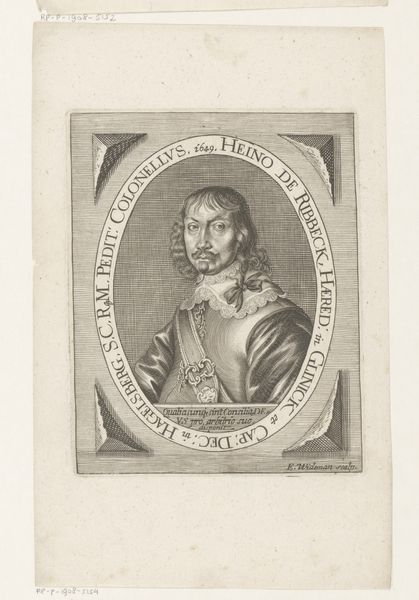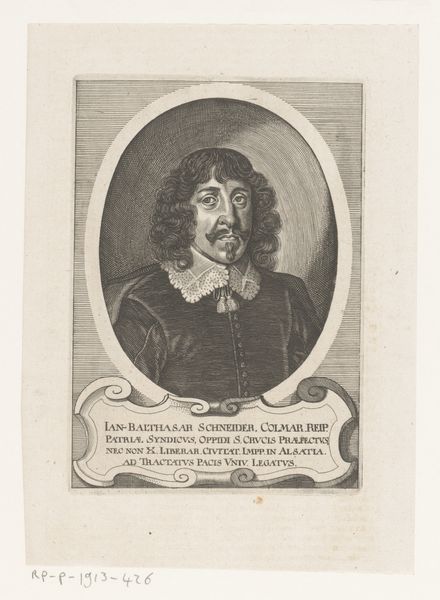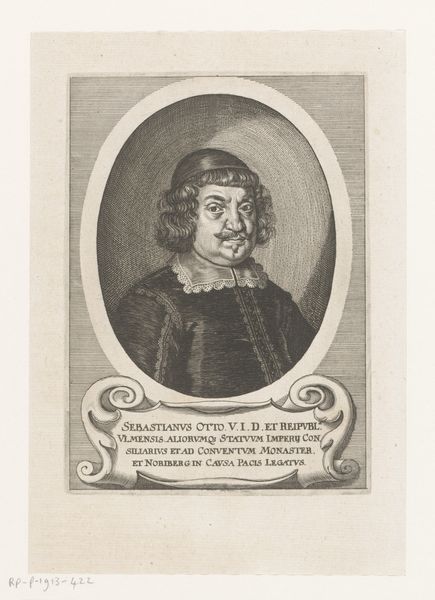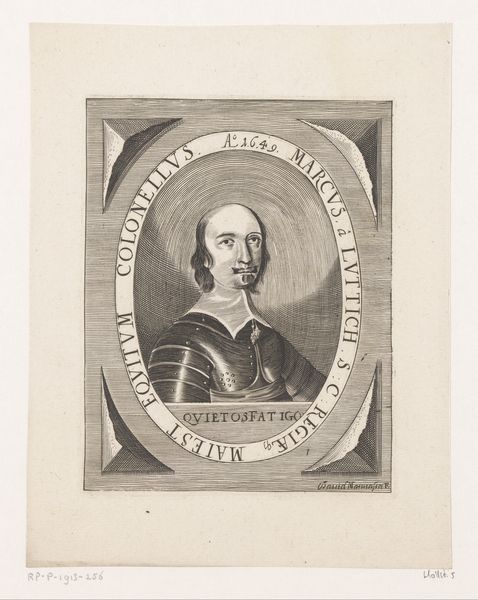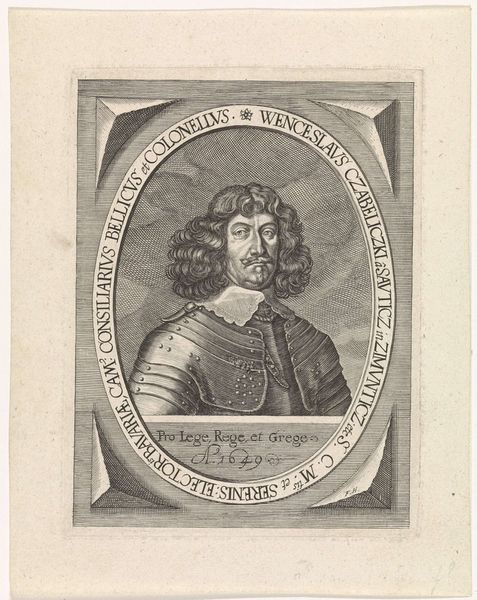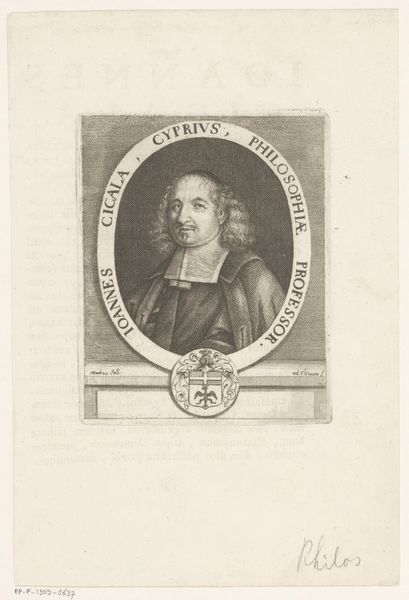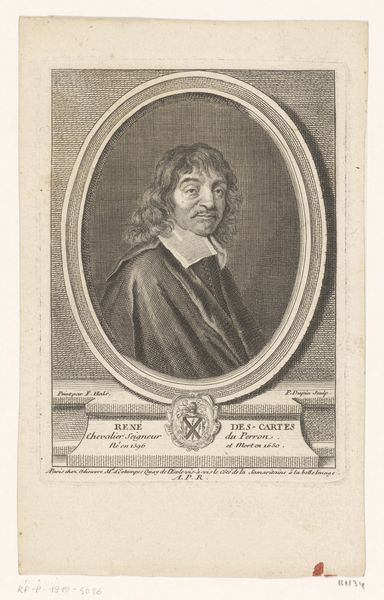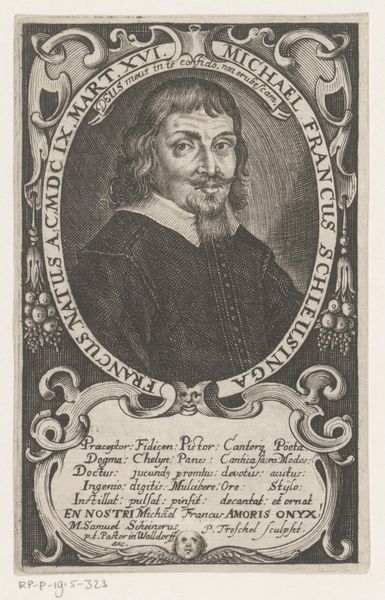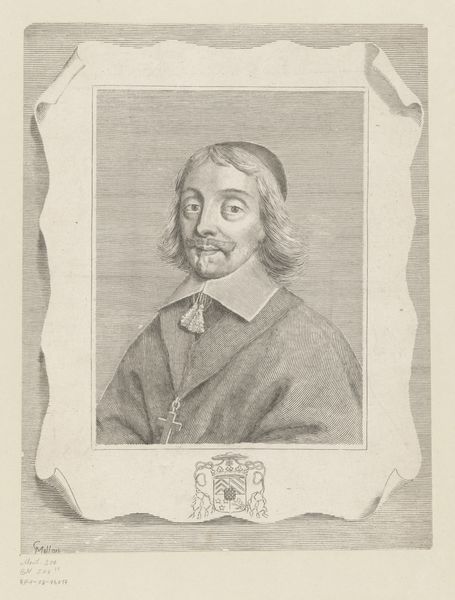
engraving
#
portrait
#
baroque
#
old engraving style
#
figuration
#
line
#
history-painting
#
engraving
Dimensions: height 147 mm, width 117 mm
Copyright: Rijks Museum: Open Domain
Curator: This is a fascinating engraving from 1649, titled "Portret van Johann Ulrich von Bissinger" by David Mannasser, residing here at the Rijksmuseum. It immediately strikes you, doesn’t it? Editor: Yes, a strong impression. There's a rigidity to the portrayal, almost like he’s a figure pressed into the armor. But also, that incredible detail in the lines... Curator: Precisely. Mannasser really captured a certain formality. The subject, Johann Ulrich von Bissinger, is presented as a military figure, a "Colonel," as the inscription around the oval declares. Look closely at the lines describing his armor; Mannasser expertly uses them to convey volume and texture. Editor: It's like the weight of duty, even class, bearing down on him. He seems trapped within these lines, both literally in the engraving and figuratively, in his societal role. The motto "Miles Servatus Bis Nocet," inscribed there is thought-provoking. The “saved soldier harms twice”. Was it perhaps referring to the ongoing issues after a truce of some sort? Curator: Exactly! Context is crucial. 1649 was a turbulent time in Europe. The engraving speaks volumes about the glorification of military service during a period of constant conflict. The inclusion of Bissinger’s noble status "L.B. S.C.RM." emphasizes the subject's status within society. He's both a soldier and a nobleman, inextricably linked. Editor: The inscription also contributes to its visual language—this constant push-and-pull. It presents the figure as elevated, distinguished, but also implicated within systems of war, status, and power that perpetuate harm. Who benefits? Curator: Absolutely. Mannasser's decision to create an engraving, rather than a painting for instance, makes it possible for multiples to be printed and broadly distributed, cementing Bissinger’s presence as a figure in society’s collective awareness. It is not merely a depiction, but the production of a historical persona. Editor: It's a sobering consideration, this layering of intention. When we consider such imagery through the lenses of critical historical analysis, we are pressed to confront not only representation but the ongoing implications of power, and to consider how and by whom such narratives are perpetuated. Curator: Indeed. I trust this piece encourages more people to think about those very systems and challenges with historical accuracy, which often transcend generations.
Comments
No comments
Be the first to comment and join the conversation on the ultimate creative platform.
